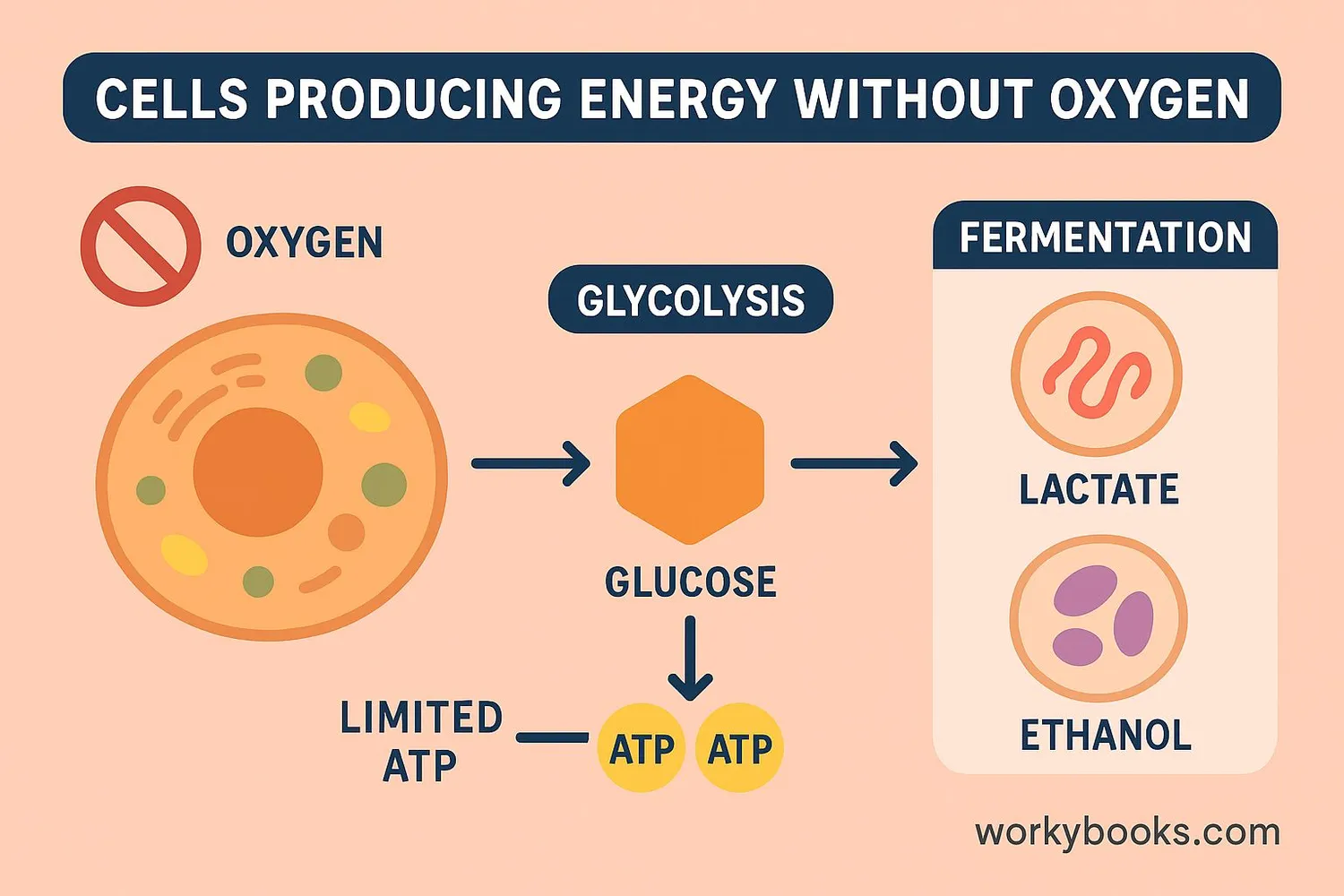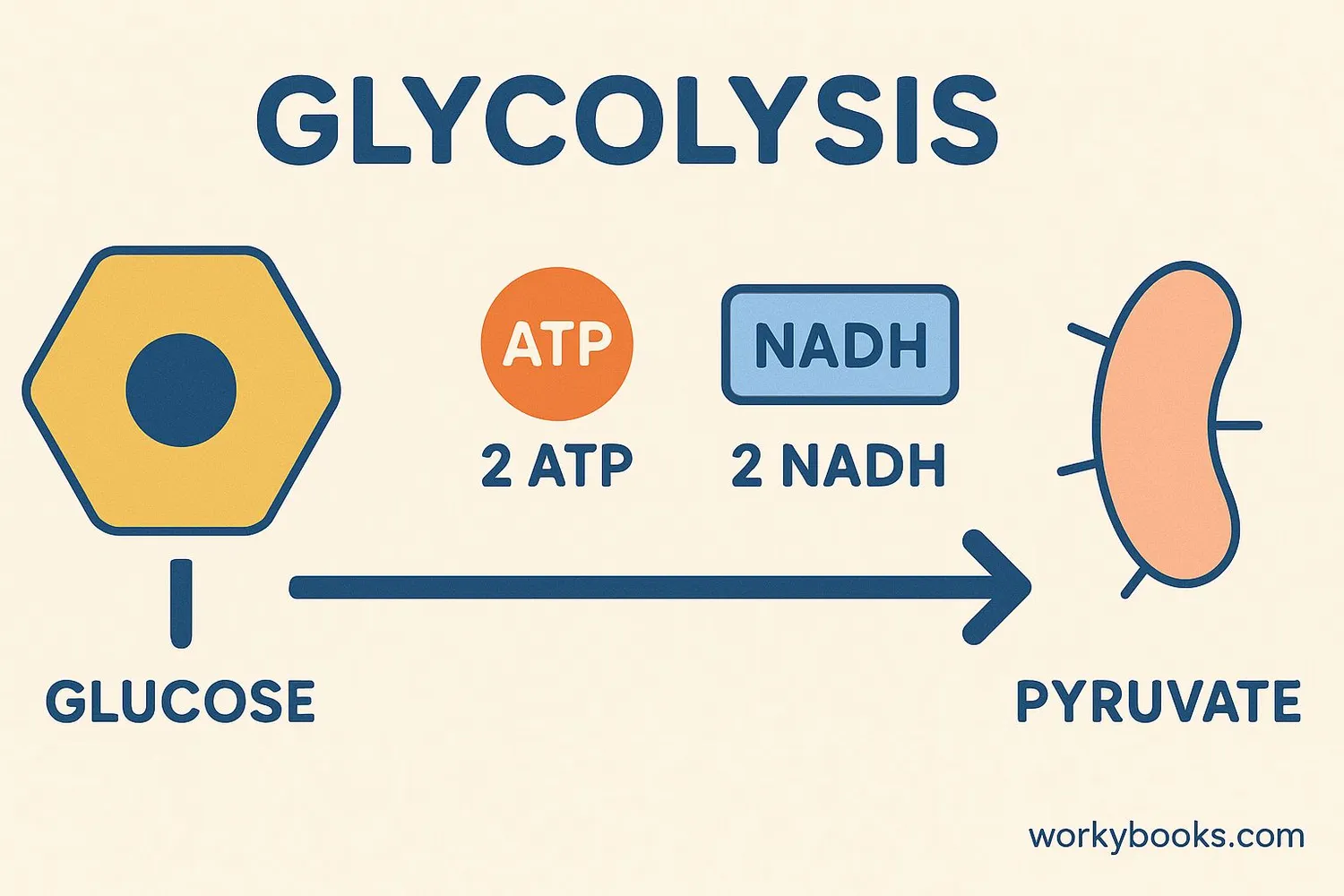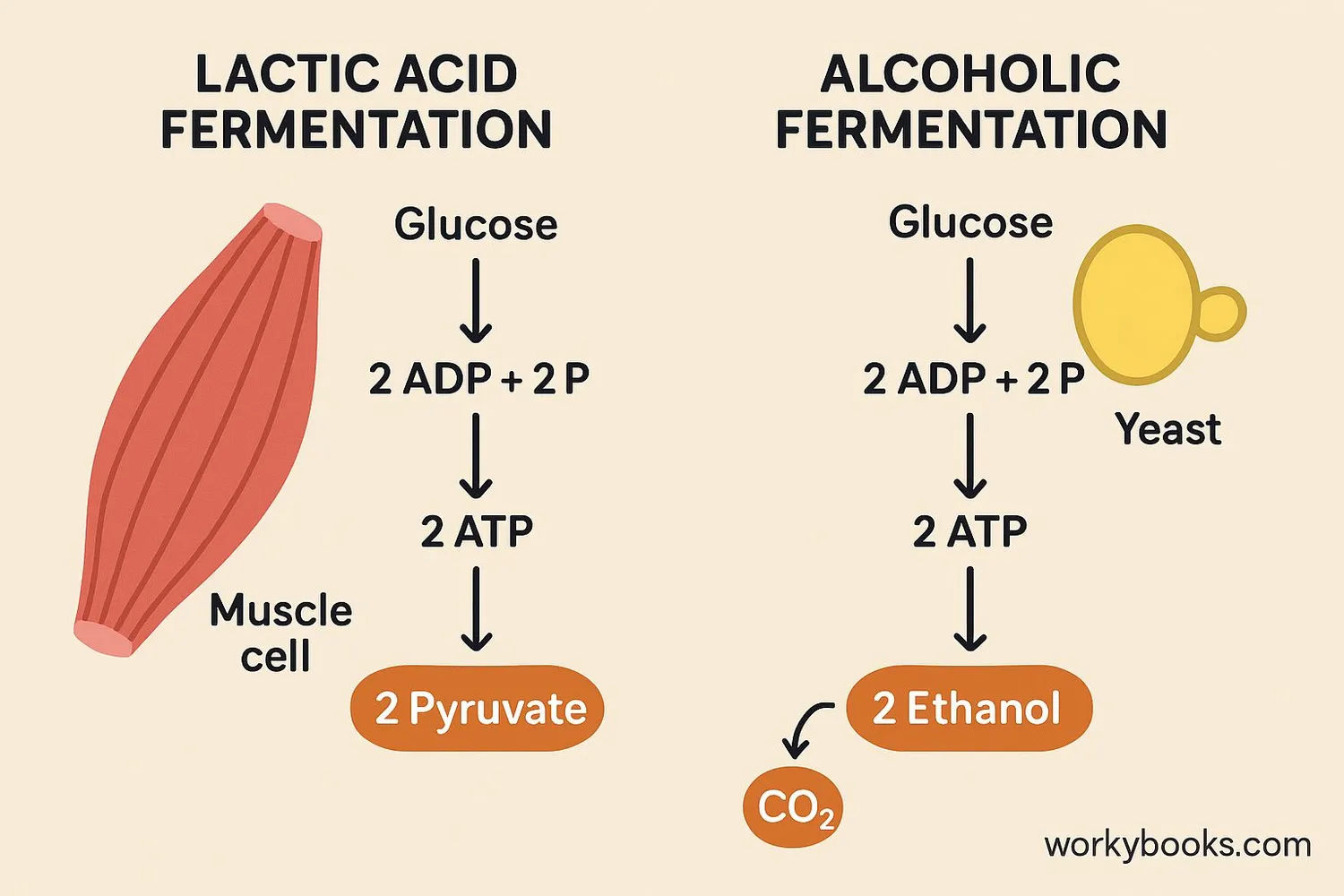Anaerobic Respiration - Definition, Examples, Quiz, FAQ, Trivia
Discover how cells create energy without oxygen through fermentation and other processes
What is Anaerobic Respiration?

Anaerobic respiration is how cells create energy without using oxygen! The word "anaerobic" means "without air" or "without oxygen." When oxygen is scarce, cells use this special process to keep making energy.
Think of it as your cells' backup power system! Just like how you might use a flashlight when the main lights go out, your cells use anaerobic respiration when there's not enough oxygen available. It doesn't make as much energy as aerobic respiration (with oxygen), but it's enough to keep things running for a short time.
Key Definition
Anaerobic respiration is the process by which cells break down glucose to produce energy without using oxygen.
How Anaerobic Respiration Works

Anaerobic respiration begins with a process called glycolysis, which happens in the cell's cytoplasm. Here's how this energy-making process works:
Glycolysis
Glucose is broken down into pyruvate, producing 2 ATP molecules
NADH Production
Electron carriers (NAD+) are converted to NADH
Fermentation
Pyruvate is converted to other substances to regenerate NAD+
Energy Release
Only 2 ATP are produced per glucose molecule (vs. 36 in aerobic respiration)
The key difference from aerobic respiration is that anaerobic respiration doesn't use the electron transport chain or oxygen as the final electron acceptor. Instead, it uses other molecules to keep the process going.
Efficiency Note
Anaerobic respiration is much less efficient than aerobic respiration, producing only about 5% as much ATP from the same amount of glucose!
Types of Fermentation

Fermentation is the process that follows glycolysis in anaerobic respiration. There are two main types of fermentation that you should know about:
Lactic Acid Fermentation
Occurs in muscle cells when oxygen is low. Pyruvate is converted to lactic acid, which can cause muscle fatigue.
Alcoholic Fermentation
Used by yeast and some bacteria. Pyruvate is converted to ethanol and carbon dioxide.
NAD+ Regeneration
Both types regenerate NAD+ so glycolysis can continue producing small amounts of ATP.
These fermentation processes allow cells to keep producing energy even when oxygen is unavailable. However, they can only continue for limited periods before waste products build up and need to be removed.
Why Anaerobic Respiration is Important

Anaerobic respiration might be less efficient than aerobic respiration, but it's still incredibly important for many organisms and processes:
Short Burst Energy
Provides quick energy for intense, short-duration activities like sprinting or weightlifting
Food Production
Used in making yogurt, cheese, bread, beer, wine, and pickled foods
Microbial Life
Allows bacteria to survive in environments without oxygen like deep soil or sediments
Anaerobic respiration also explains why you breathe heavily after intense exercise - this is called "oxygen debt." Your body is working to repay the oxygen that was missing during anaerobic respiration and to remove the lactic acid that built up in your muscles.
Anaerobic Respiration Quiz
Test your knowledge about anaerobic respiration with this quiz! Answer all 5 questions to see how much you've learned.
Frequently Asked Questions
Here are answers to some common questions about anaerobic respiration:
Interesting Anaerobic Respiration Facts
Discover some amazing facts about anaerobic respiration!
Ancient Energy
Anaerobic respiration is one of the oldest metabolic processes on Earth, used by ancient bacteria billions of years before oxygen accumulated in the atmosphere.
Deep Sea Adaptations
Some deep-sea creatures rely primarily on anaerobic respiration because oxygen is scarce in deep ocean waters where sunlight doesn't reach.
Extreme Life
Certain bacteria can only survive through anaerobic respiration and would die if exposed to oxygen. These are called obligate anaerobes.
Athletic Training
Athletes can train to improve their anaerobic capacity, allowing them to perform high-intensity activities for longer periods before fatigue sets in.


